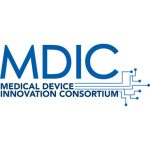“Medical technology to go” was thus the fitting motto for the 8th COMPAMED Spring Convention which took place in Frankfurt, Germany in May 2014. The Convention is now firmly established and every year in spring, it offers a preview of the exciting themes to be presented at COMPAMED, the leading international trade fair for suppliers to the medical industry with more than 700 exhibitors. The next staging of COMPAMED is scheduled for November 12 – 14, 2014 in Düsseldorf, Germany. At the COMPAMED Spring Convention, some 50 experts from research institutions and “medtech” component manufacturers attended presentations and discussed the latest trends.
Intelligent and mobile systems, for example, also have become increasingly established in what is called the secondary healthcare market, where they are often used in the prevention and fitness area. In conjunction with modern E-health applications, numerous new possibilities open up to meet the increased health awareness of the population and the challenges of demographic change. In this sense, “medical technology to go” is also a source of inspiration for the innovation field of AAL (Ambient Assisted Living). This term represents elderly assistance systems for independent living in familiar domestic surroundings. Regarding medical care of the elderly with chronic illnesses, mobile diagnostic devices for monitoring important vital signs with telematic link to emergency services have been repeatedly highlighted by exhibitors for quite some time (e.g. corresponding sensors or compact telemedicine units), whether at COMPAMED or the currently held MEDICA, the world’s largest medical trade show.
Convergence of technology and IT
Information technology is becoming increasingly important with respect to mobile solutions. The potential ranges from constant accessibility and availability of information to documentation at the bedside in real time and optimization of daily processes.”Just like e-mail has changed our work flows decisively over the last 20 years, that is how mobile applications will change planning and documentation procedures at the hospital,” predicted Dr. Michael Meyer, Director of the Clinical Products Division of the Health Care Sectors by Siemens, at the COMPAMED Spring Convention. The company introduced the first mobile digital X-ray device with a wireless detector, the “Mobilett Mira”, already in 2011. This device transmits image data via W-LAN to an integrated image system and facilitates in particular the examination of movement restricted, seriously ill patients. Such devices will continue to gain importance in the future for other imaging techniques as well.
Faster results on-site is also the goal of the so-called point-of-care diagnosis, a laboratory diagnosis conducted close to the patient for time and cost savings. For this reason, a chip-based method to diagnose acute leukemia was developed by iX-factory together with the College of Hamm-Lippstadt (Germany) as part of a research project financed by the Central Innovation Program for SMEs (ZIM).
“Every 16 minutes, a person receives the shattering diagnosis of blood cancer. In Germany alone, 12,000 people a year are diagnosed with this disease,” explains Dominique Bouwes, CEO of iX-factors. The new procedure makes the early detection of acute myeloid and acute lymphocytic leukemia (AML and ALL) possible in less than one hour. The materials and technologies were designed specifically for the requirements of the project to guarantee chip properties such as biocompatibility, cell recognition, sensitive measurements, as well as simpler operating steps. The micro system is dimensioned in such a way that cells can flow through the chip; the detection carried out with fluorescence. The development by iX-factory is part of the field of microfluidics, a segment of the medical technology sector that has grown vastly in the last few years with a growth rate of 27 percent.
Important considerations for point-of-care applications are both ease of use and affordable prices. Here, the use of plastics offers cost-effective ways for series production. As a manufacturer of complex micro structures in polymers, the company CDA GmbH manufactures microfluidic and optical components using injection molding or injection-compression molding in series production. A focus is the combination of microfluidics, optics and printed electronics for mobile application. “We replicate the structures particularly in injection molding and injection-compression molding and use laser welding as the joining technology,” reported Dr. Angelika Murr, Project Manager for micro functional solutions at CDA.
Comfortable monitoring
Monitoring applications are also of great interest. For example, the Research Institute for Micro Sensors and Photovoltaics (CiS) has developed vital parameter sensors that can be used for pulse wave analysis. This is based on “in-ear sensor technolog” for cardiovascular monitoring, which is based on a patented, optoelectronic transmitter receiver module. It has long been known that an increased intra ocular pressure is a major risk factor for the development of glaucoma. But unstable blood circulation of the ocular fundus is also a pathological cause. About 40 percent of glaucoma patients who have normal intra ocular pressure exhibit sensitivities to fluctuations in blood pressure. For the study of vascular dysregulation, CiS together with the company aviant GmbH from Jena (Germany), developed a multi sensory solution that can capture time-synchronous ECG and photoplethysmography parameters (PPG).
According to current findings, not only is it the eye that is “sick” in patients with normal pressure glaucoma, but possibly the heart and vascular system of the body in general as well. The time-synchronous measurement of ECG and PPG allows the screening of vascular dysregulation with a high degree of sensitivity and, above all, a very high specificity. The centerpiece, the PPG-sensor for detecting pulse waves, is characterized by a high signal quality and excellent wearing comfort. Almost invisible, hidden in an ear mould, the sensor is worn in the external auditory meatus and thus can be used by patients everyday and without restrictions during routine activities. This was made possible through the integration of a special, optical emitter receiver module, produced as lab-on-a-chip technology. A portable electronic system wearable on the body and powered by two AA batteries completes the mobile solution. This includes, in addition to the sensor control, a data logger with low-noise and low-drift pre-amplification and signal processing. Data can be stored either on a conventional SD-card or via a USB interface on the PC of the physician.
“Wearables” for prevention
Portable devices (“wearables”) integrated directly into clothing promise an especially high degree of mobility. “Wearables are a new device category that changes medicine from a more curative approach to a preventive approach,” remarked Erik Jung of the Fraunhofer Institute for Reliability and Microintegration (IZM). This includes various projects to log and monitor vital parameters, whether at work, at home or in the car. The technological roots for this are well accessible, miniaturized sensors, power supply, and communication, as well as improved data mining to extract hidden information from large amounts of data, and cloud services that offer data access anywhere and anytime. Tiny sensors, flexible and stretchable substrates made from silicone, polyurethane, polyimide or textiles that can extensively absorb electronics assemblies, as well as miniaturized connection technologies, energy-efficient communication electronics and high density energy storage, which among others, wirelessly recharge themselves, meet the technical requirements.
“People wearing such equipment are in fact a complete measuring station,” states Jung. The equipment is now increasingly hidden in intelligent textiles, which monitor different parameters. Fibers as the basis of textiles have a wide range of properties that become part of the equation because they can be firm and unyielding, flexible and stretchable and exhibit different surface textures. “We try to map the process chain in as much detail as possible: from the granules to spinning and modifying the fiber to the manufacturing and finishing of the textiles and up to the installation and the finished medical textile,” emphasizes Dr. Christoph Monfeld, Head of the Department of Life Sciences & Smart Textiles at the Institute of Textile Technology at RWTH Aachen (Germany). The topic of intelligent textiles for medical applications in its many facets will certainly play an important role at COMPAMED 2014 just as the trend-setting area of “medical technology to go” will.
At COMPAMED 2014, about 700 exhibitors will present their products in exhibit halls halls 8a and 8B, building on the record from the previous year. Of the 132,000 visitors who attended COMPAMED and the concurrently held MEDICA trade fair in 2013, about 16,000 were interested in the topics presented by COMPAMED.
For information on visiting or exhibiting at COMPAMED or MEDICA 2014, contact Messe Düsseldorf North America via email: info@mdna.com or visit http://www.mdna.com.






